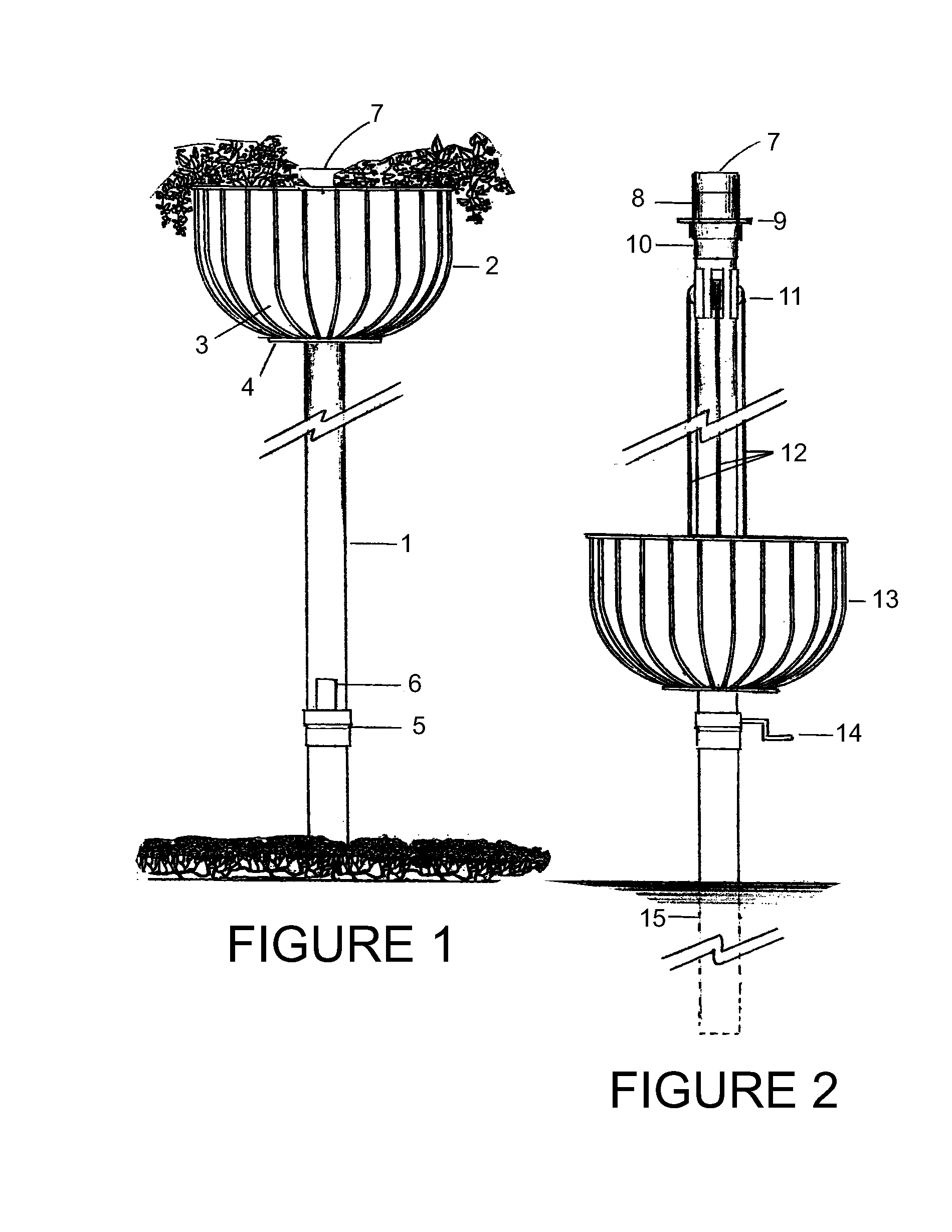Adjustable height planter with an optional waterfall, and/or an adjustable irrigation system for controllably watering the planter and surrounding terrain
a planter and adjustable technology, applied in the field of planters, can solve the problems of high labor intensity, inconvenient operation, and difficulty in reaching the conventional suspended planter, and achieve the effects of reducing labor intensity, reducing labor intensity, and reducing labor intensity
- Summary
- Abstract
- Description
- Claims
- Application Information
AI Technical Summary
Benefits of technology
Problems solved by technology
Method used
Image
Examples
Embodiment Construction
[0142]With reference to the Figures and description provided below, an exemplary pole planter system according to principles of the invention includes an adjustable height planter, a vertical support having a top end and a bottom end, and means for controllably adjusting the height of the planter relative to the support along a continuum of positions, from a lowest position to a highest position. In one embodiment, the means for controllably adjusting the height includes at least one pulley, which may define the highest position, and a tether guided by the pulley. In another embodiment, the means for controllably adjusting the height includes a winch (or windlass) operably coupled to the tether is adapted to retract and extend the tether. The winch includes a control means, such as a handle or crank or electrical or electromechanical controller, accessible outside the support. In yet another embodiment, the means for controllably adjusting the height includes a rotatable shaft opera...
PUM
 Login to View More
Login to View More Abstract
Description
Claims
Application Information
 Login to View More
Login to View More - R&D
- Intellectual Property
- Life Sciences
- Materials
- Tech Scout
- Unparalleled Data Quality
- Higher Quality Content
- 60% Fewer Hallucinations
Browse by: Latest US Patents, China's latest patents, Technical Efficacy Thesaurus, Application Domain, Technology Topic, Popular Technical Reports.
© 2025 PatSnap. All rights reserved.Legal|Privacy policy|Modern Slavery Act Transparency Statement|Sitemap|About US| Contact US: help@patsnap.com



